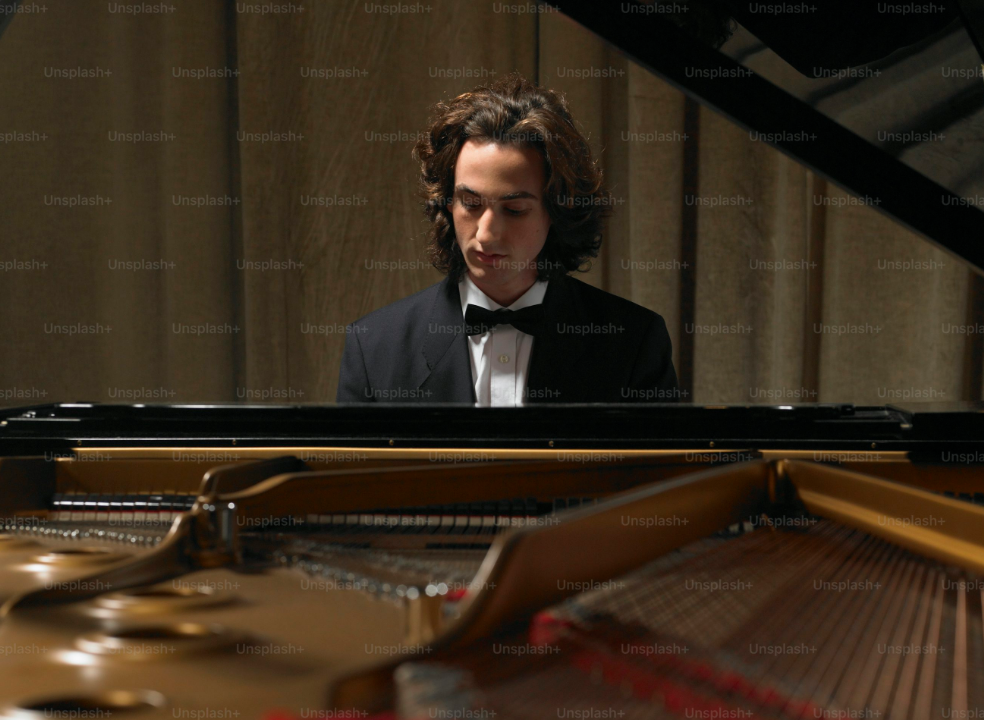Pianists CAN Influence Piano Timbre Through Touch RSS

Solving the Mystery: How a Pianist's Touch Really Changes the Sound
I. Executive Summary: The Science of Expressive Touch
For over a century, musicians and scientists debated whether expert pianists could truly change the quality of a piano's tone (known as timbre) just by changing their touch, separate from changes in volume. This new research confirms that the "pianist's touch" is real, transforming what was considered a subjective artistic metaphor into a quantifiable, scientifically proven motor skill.
The key finding, published in the Proceedings of the National Academy of Sciences (PNAS), is that pianists manipulate five specific, subtle key movements that listeners can reliably perceive as changes in the tone's aesthetic (like playing "bright" versus "dark"). Crucially, researchers proved this was a definitive causal mechanism—meaning changing the movement causes the change in tone quality.
II. The Historical Debate: Why Was This a Mystery?
The Core Problem
The skepticism surrounding the "pianist's touch" stemmed from the physics of the modern grand piano. The complex internal mechanism is designed so that the key detaches from the hammer just before the hammer strikes the string—a process called escapement. Skeptics argued that since the pianist loses physical connection, the only thing they can control is the hammer's final velocity, which determines the sound's loudness (volume), not its quality (timbre).
Defining Timbre
Timbre is the characteristic that makes a piano sound different from a guitar playing the exact same note at the exact same volume. It is determined by the complex mixture of frequencies (overtones) and the attack transient (how the sound starts). Early attempts to study the piano failed because the instruments used could not measure the tiny, high-speed changes in finger and key movement that happen in the milliseconds before the hammer hits the string. The scientific breakthrough required highly advanced technology to finally measure these elusive micro-movements.
III. The Breakthrough: High-Speed Sensing Technology
The Research Team and Apparatus
The study was a collaboration between the NeuroPiano Institute and Sony Computer Science Laboratories, Inc.. They developed a specialized, non-contact sensor system called HackKey.
The specifications of this system are what made the research possible:
Speed: It records key movement at 1,000 frames per second (1 ms temporal precision).
Accuracy: It measures spatial position down to 0.01 mm.
This super-accurate measurement allowed the team to track the key’s entire journey—including the tiny changes in acceleration—that previous sensors missed.
The Experiment
The researchers recorded 20 professional pianists who were asked to intentionally play the same notes with six different artistic expressions, grouped into three perceived dimensions: weight, clarity, and brightness. A listening test involving musicians and non-musicians confirmed that listeners could consistently hear the differences in the tone qualities the pianists intended to create.
IV. The Five Kinematic Secrets of Timbre
Using data analysis on the movement recordings, the team identified five specific key movement features that pianists use to shape the sound's perceived timbre.
The Motor Control Mechanisms
The way a pianist uses their touch goes far beyond simple speed (velocity); it involves complex, subtle timing and acceleration control:
Key Descending Velocity: The speed and force of the key travel, which is linked to the perceived Weight of the tone.
Acceleration at Escapement: The crucial measurement of how fast the key/hammer speed is changing at the exact moment the hammer detaches from the key mechanism. This significantly controls perceived Brightness (bright vs. dark).
Time Taken Between Keypresses: Subtle timing between notes (articulation), which influences perceived Clarity (clear vs. blurred).
Synchronicity of Movements Between the Hands: How precisely the notes played by different hands align, also influencing clarity.
Key Depression Duration and Key-Lift Timing: Controlling the full stroke time, which impacts overall precision and control.
Causal Proof
The definitive step was proving that these movements cause the change in timbre. The researchers successfully manipulated individual movements (like acceleration) while ensuring the loudness (velocity) remained the same. Listeners reliably perceived the resulting change in timbre, establishing a direct cause-and-effect relationship between precise motor skill and tone quality.
V. Real-World Applications
These findings have major implications beyond the concert hall:
Music Education: Teachers can now move past abstract metaphors (like "play with fire") and use specific, measurable technical goals (like "control the acceleration at escapement") to teach students how to manipulate tone.
Neuroscience: The study provides a clear model for how the human brain cultivates incredibly fast and precise motor skills (dexterity), offering insights for understanding skill acquisition and rehabilitation .
Technology: Digital pianos and synthesizers (which traditionally rely only on simple velocity data) can be made significantly more expressive and realistic by incorporating the five identified kinematic variables into their virtual models.
References
Kaori Kuromiya, Yuya Kobayashi, Masato Hirano, Shinichi Furuya. Motor origins of timbre in piano performance. Proceedings of the National Academy of Sciences, 2025; 122 (39) DOI: 10.1073/pnas.2425073122
NeuroPiano Institute. "A century-old piano mystery has just been solved." ScienceDaily. ScienceDaily, 2 October 2025. <www.sciencedaily.com/releases/2025/10/251002073956.htm>.